
The gaur (Bos gaurus), also known as the Indian bison, is a bovine native to South Asia and Southeast Asia, and has been listed as Vulnerable on the IUCN Red List since 1986. The global population was estimated at a maximum of 21,000 mature individuals in 2016, with the majority of those existing in India. It has declined by more than 70% during the last three generations, and is extirpated from Sri Lanka and most likely Bangladesh. Populations in well-protected areas are stable and increasing. It is the largest species among the wild cattle and the Bovidae. In Malaysia, it is called seladang, and pyaung ပြောင် in Myanmar. The domesticated form of the gaur is called gayal (Bos frontalis) or mithun.
Bison gaurus was the scientific name proposed by Charles Hamilton Smith in 1827. Later authors subordinated the species under either Bos or Bibos.
To date, three gaur subspecies have been recognized:
B. g. gaurus ranges in India, Nepal and Bhutan;
B. g. readei described by Richard Lydekker in 1903 based on a specimen from Myanmar is thought to range from Upper Myanmar to Tanintharyi Region;
B. g. hubbacki described by Lydekker in 1907 based on a specimen from Pahang in Peninsular Malaysia; it was considered to range in Peninsular Malaysia and probably northward to Tenasserim. This classification, based largely on differences in coloration and size, is no longer widely recognized.
In 2003, the International Commission on Zoological Nomenclature fixed the valid specific name of the wild gaur as the first available name based on the wild population, even though it was antedated by the name for the domestic form. Most authors have adopted the binomial Bos gaurus for the wild species as valid for the taxon.
In recognition of phenotypic differences between Indian and Southeast Asian gaur zoological specimens, the trinominals Bos gaurus gaurus and Bos gaurus laosiensis are provisionally accepted pending further morphometric and genetic study.
Gaur historically occurred throughout mainland South and Southeast Asia, including Vietnam, Cambodia, Laos, Thailand, Peninsular Malaysia, Myanmar, India, Bangladesh, Bhutan, China and Nepal. Today, the range of the species is seriously fragmented, and it is regionally extinct in Sri Lanka.
Mature bull Indochinese Gaur at Khao Pang Ma, Thailand
Gaur are largely confined to evergreen forests or semi-evergreen and moist deciduous forests, but also occur in deciduous forest areas at the periphery of their range. Gaur habitat is characterized by large, relatively undisturbed forest tracts, hilly terrain below an elevation of 1,500 to 1,800 m (4,900 to 5,900 ft), availability of water, and an abundance of forage in the form of grasses, bamboo, shrubs, and trees. Their apparent preference for hilly terrain may be partly due to the earlier conversion of most of the plains and other low-lying areas to croplands and pastures. They occur from sea level to an elevation of at least 2,800 m (9,200 ft). Low-lying areas seem to comprise optimal habitat.
In Nepal, the gaur population was estimated to be 250–350 in the mid-1990s, with the majority in Chitwan National Park and the adjacent Parsa National Park. These two parks are connected by a chain of forested hills. Population trends appeared to be relatively stable.[2] The Chitwan population has increased from 188 to 368 animals in the years 1997 to 2016. Census conducted in Parsa National Park confirmed the presence of 112 gaur in the same period.
In India, the population was estimated to be 12,000–22,000 in the mid-1990s. The Western Ghats and their outflanking hills in southern India constitute one of the most extensive extant strongholds of gaur, in particular in the Wayanad – Nagarhole – Mudumalai – Bandipur complex. The populations in India, Bhutan and Bangladesh are estimated to comprise 23,000–34,000 individuals. Major populations of about 2,000 individuals have been reported in both Nagarahole and Bandipur National Parks, over 1,000 individuals in Tadoba Andhari Tiger Project, 500–1000 individuals in both Periyar Tiger Reserve and Silent Valley and adjoining forest complexes, and over 800 individuals in Bhadra Wildlife Sanctuary. Trishna Wildlife Sanctuary in southern Tripura is home to a significant number of individuals.
In Bhutan, they apparently persist all over the southern foothill zone, notably in Royal Manas National Park, Phibsoo Wildlife Sanctuary and Khaling Wildlife Sanctuary.
In Bangladesh, a few gaur occur in the Chittagong Hill Tracts, mostly in Banderban district. During a camera trap project, few gaur were recorded indicating that the population is fragmented and probably declining. Gaurs are hunted by local tribal people in Sangu Matamuhari reserve forest although hunting is prohibited in Bangladesh.
Khao Pang Ma herd of Indochinese Gaur. I question the numbers in this article and suspect they are much higher in the greater Eastern Forest Complex
In Thailand, gaur were once found throughout the country, but fewer than 1,000 individuals were estimated to have remained in the 1990s. In the mostly semi-evergreen Dong Phayayen – Khao Yai Forest Complex, they were recorded at low density at the turn of the century, with an estimated total of about 150 individuals.
In Vietnam, several areas in Đắk Lắk Province were known to contain gaur in 1997. Several herds persist in Cát Tiên National Park and in adjacent state forest enterprises. The current status of the gaur population is poorly known; they may be in serious decline.
In Cambodia, gaur declined considerably in the period from the late 1960s to the early 1990s. The most substantial population of the country remained in Mondulkiri Province, where up to 1000 individuals may have survived up to 2010 in a forested landscape of over 15,000 km2 (5,800 sq mi).[26] Results of camera trapping carried out in 2009 suggested a globally significant population of gaur in Sre Pok Wildlife Sanctuary and the contiguous Phnom Prich Wildlife Sanctuary, and line transect distance sampling from Keo Seima Wildlife Sanctuary showed around 500 individuals in 2010. Since then, there has been rapid decline of these populations, and likely all populations across Cambodia. Updated figures for Keo Seima Wildlife Sanctuary show a decline to only 33 individuals in 2020, and 2020 encounter rates in Sre Pok Wildlife Sanctuary and Phnom Prich Wildlife Sanctuary were too low to analyze with distance sampling.
In Laos, up to 200 individuals were estimated to inhabit protected area boundaries in the mid–1990s. They were reported discontinuously distributed in low numbers. Overhunting had reduced the population, and survivors occurred mainly in remote sites. Fewer than six National Biodiversity Conservation Areas held more than 50 individuals. Areas with populations likely to be nationally important included the Nam Theun catchment and the adjoining plateau. Subsequent surveys carried out a decade later using fairly intensive camera trapping did not record any gaur any more, indicating a massive decline of the population.
In China, the gaur was present up to the 34th parallel north during the late Neolithic period about 5,200 years BP. Now it occurs only in heavily fragmented populations in Yunnan and southeastern Tibet. By the 1980s, it was extirpated in Lancang County, and the remaining animals were split into two populations in Xishuangbanna–Simao District and Cangyuan. In the mid-1990s, a population of 600–800 individuals may have lived in Yunnan Province, with the majority occurring in Xishuangbanna National Nature Reserve.
Indian Gaur at Kanha National Park, India
Where gaur have not been disturbed, they are basically diurnal. In other areas, they have become largely nocturnal due to human impact on the forest. In central India, they are most active at night, and are rarely seen in the open after 8 o'clock in the morning. During the dry season, herds congregate and remain in small areas, dispersing into the hills with the arrival of the monsoon. While gaur depend on water for drinking, they do not seem to bathe or wallow.
In January and February, gaur live in small herds of eight to 11 individuals, one of which is a bull. In April or May, more bulls may join the herd for mating, and individual bulls may move from herd to herd, each mating with many cows. In May or June, they leave the herd and may form herds of bulls only or live alone. Herds wander 2–5 km (1–3 mi) each day. Each herd has a nonexclusive home range, and sometimes herds may join in groups of 50 or more.
Gaur herds are led by an old adult female, the matriarch. Adult males may be solitary. During the peak of the breeding season, unattached males wander widely in search of receptive females. No serious fighting between males has been recorded, with size being the major factor in determining dominance. Males make a mating call of clear, resonant tones which may carry for more than 1.6 km (1 mi). Gaur have also been known to make a whistling snort as an alarm call, and a low, cow-like moo.
In some regions in India where human disturbance is minor, the gaur is very timid and shy despite their great size and power. When alarmed, gaur crash into the jungle at a surprising speed. However, in Southeast Asia and South India, where they are used to the presence of humans, gaur are said by locals to be very bold and aggressive. They are frequently known to go into fields and graze alongside domestic cattle, sometimes killing them in fights. Gaur bulls may charge without provocation, especially during summer, when the intense heat and parasitic insects make them more short-tempered than usual. To warn other members of its herd of approaching danger, the gaur lets out a high whistle for help.
Southeast Asian Gaur (Bos gaurushubackii (=laosiensis))

Bos gaurus hubbacki - Indochinese Gaur - Chulabhorn Patthana Village #9 Bang Lang NP Thailand


































































































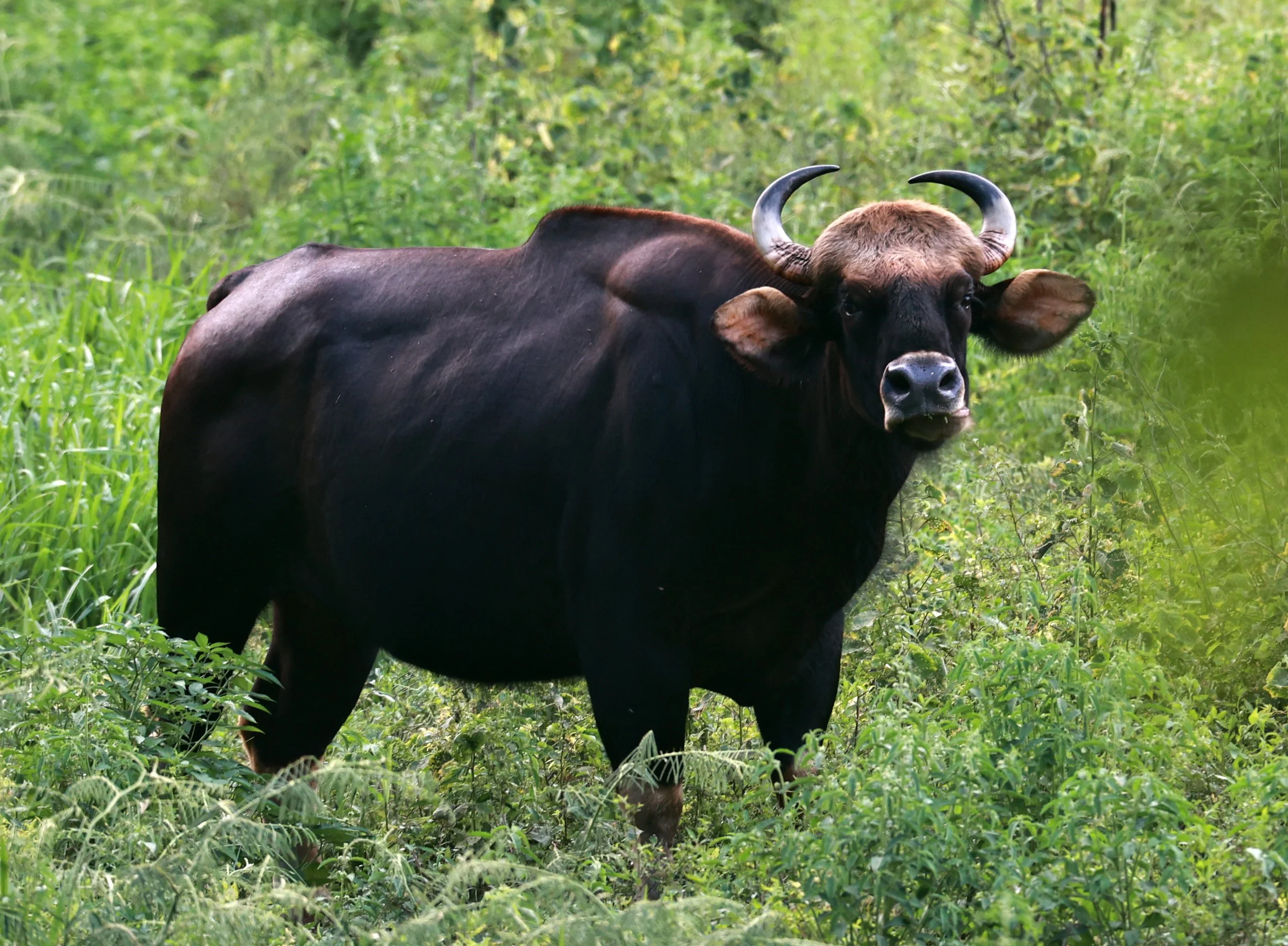














































































Bos gaurus hubbacki - Indochinese Gaur - Kaeng Krachan NP








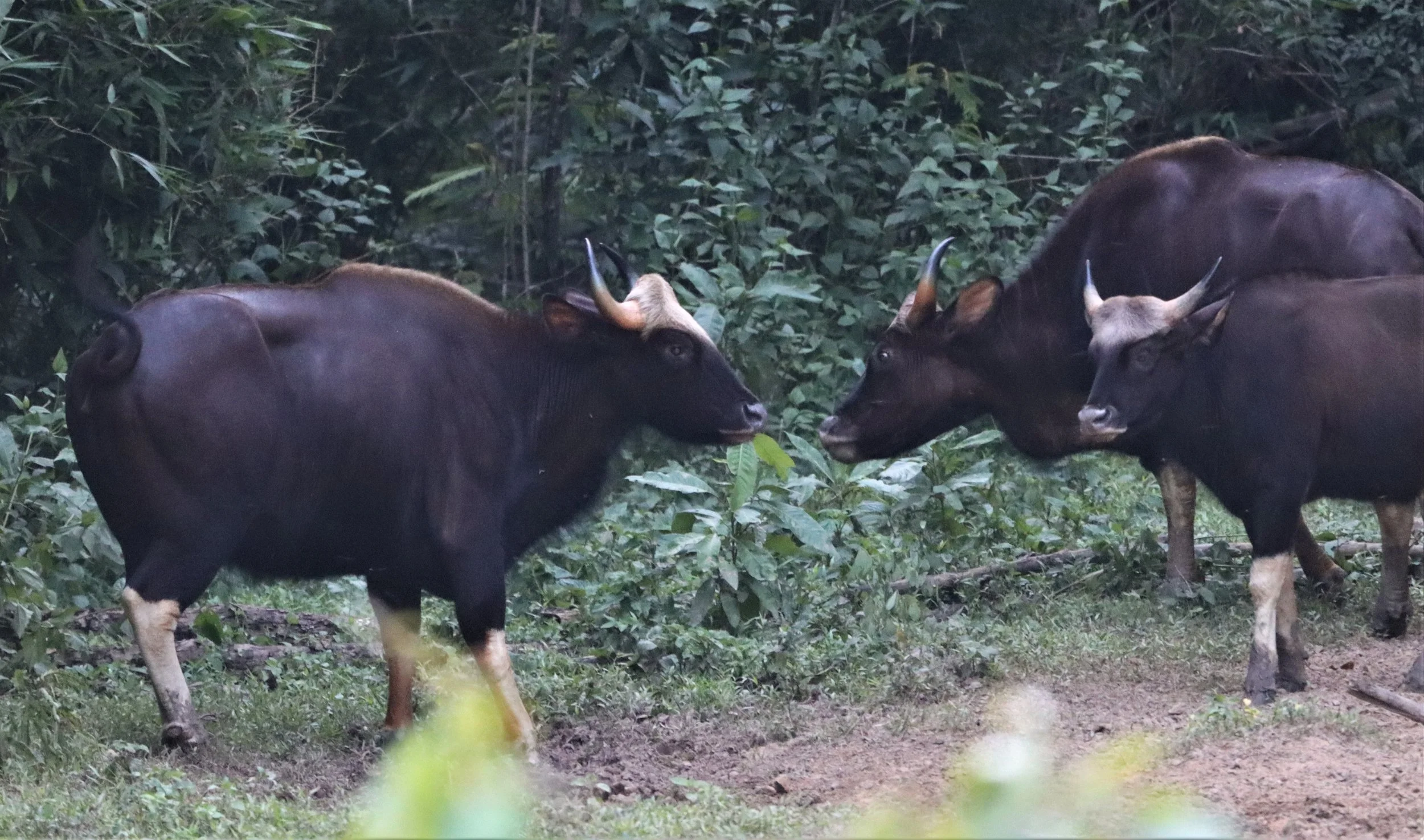






































































Bos gaurus hubbacki - Indochinese Gaur - Dong Yai NWR



















Bos gaurus hubbacki - Indochinese Gaur - Kaeng Krachan NP













Bos gaurus hubbacki - Indochinese Gaur - Khao Pang Ma Gaur Viewing Area

















































Bos gaurus hubbacki - Indochinese Gaur - Khao Pang Ma Gaur Viewing Area
























Bos gaurus hubbacki - Indochinese Gaur - Khao Pang Ma Gaur Viewing Area

















































































































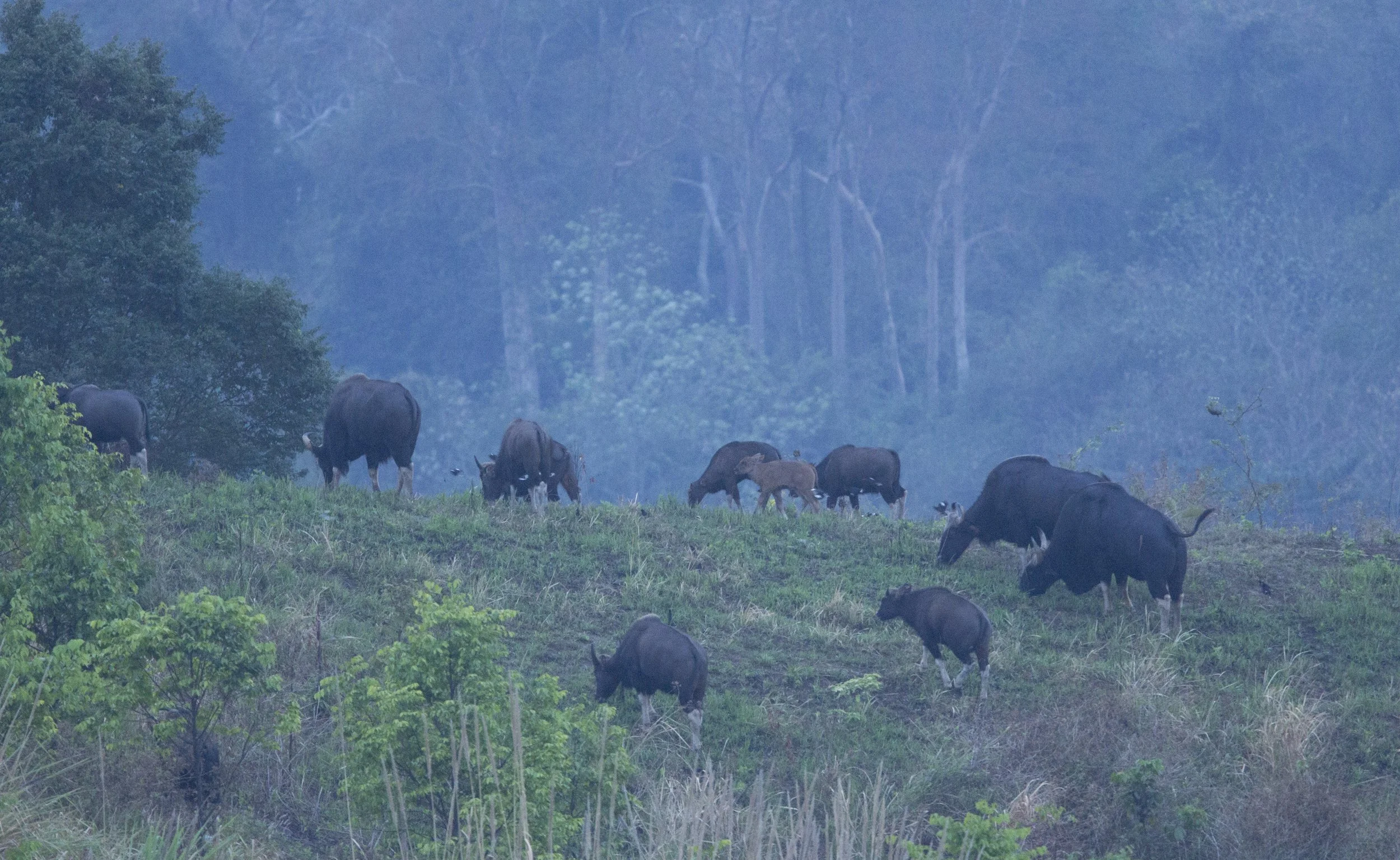






































































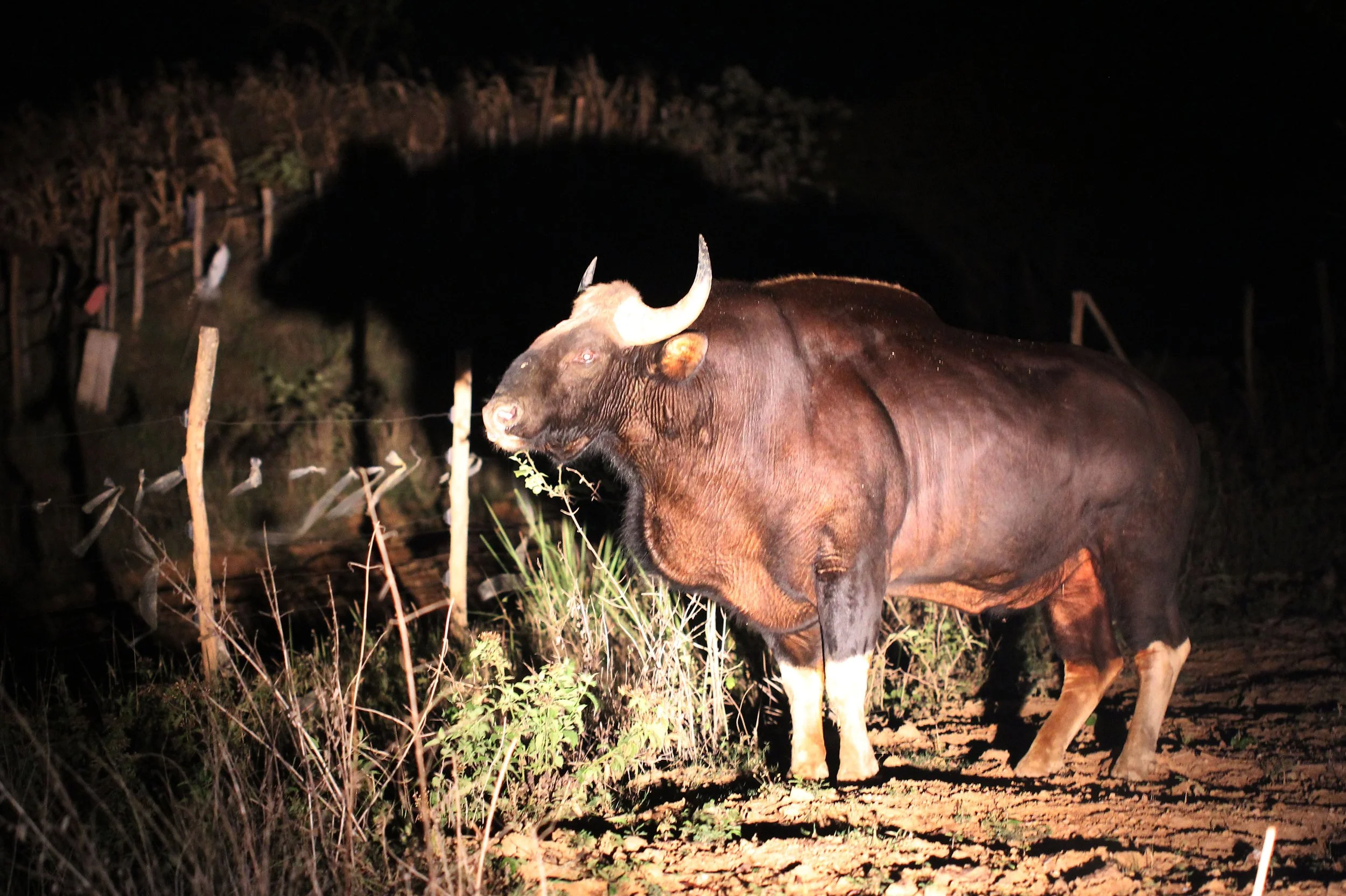





















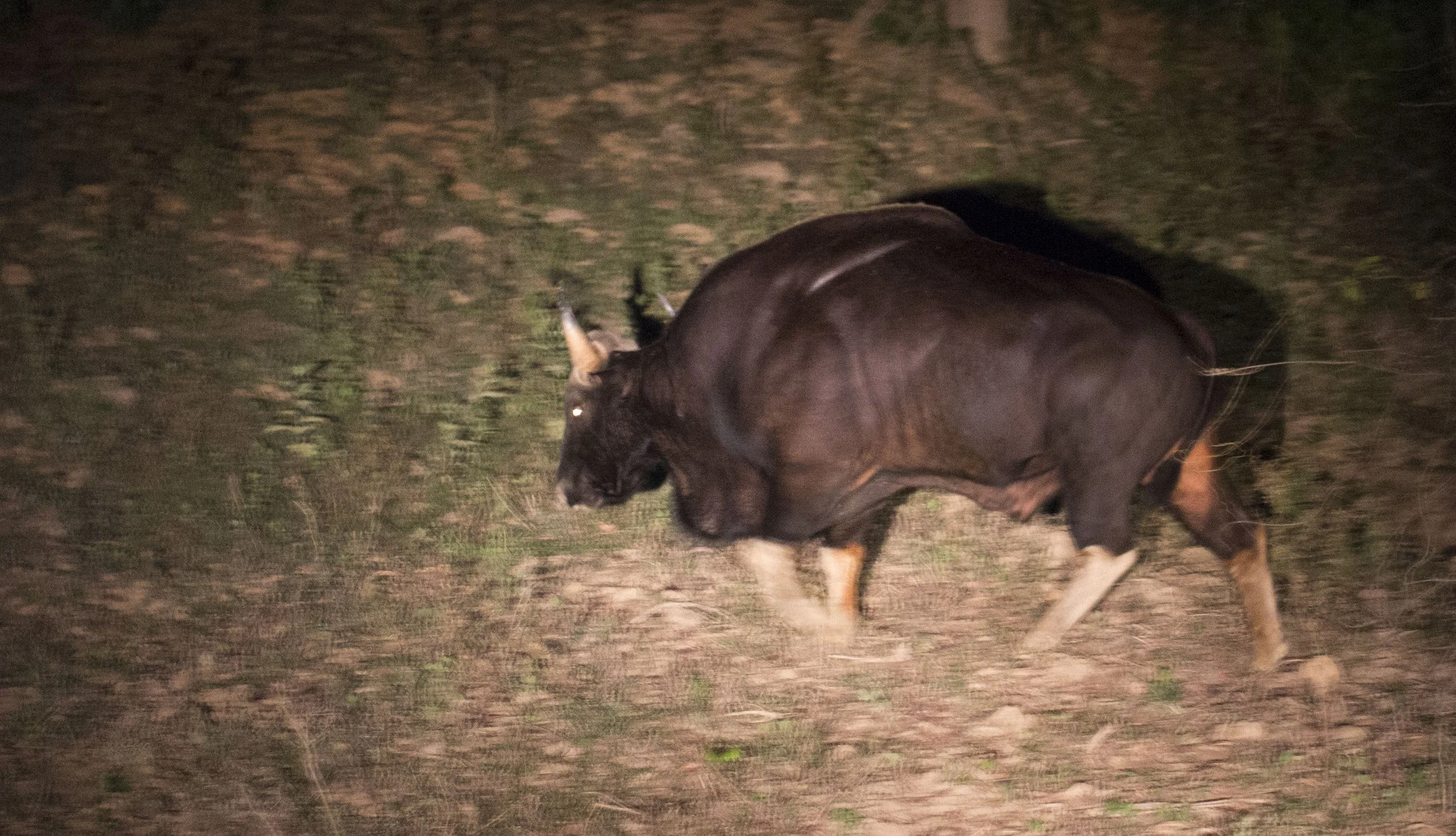










































Indian Gaur (Bos gaurus gaurus) - seen in many locations in central and southern India

















































































































